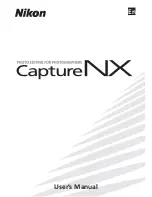
Supplying User Location Data to Telnet Servers
13-18 Configuring and Managing Telnet Servers
Supplying User Location Data to Telnet Servers
Introduction
When the access server creates a Telnet client connection, it automatically negotiates
with the Telnet server to send port user data. If the server responds with a “send”
message, the access server transmits the session port name and port number.
Appropriate software on the server can then use the location data for each session to
generate statistics about Telnet use. In these negotiations, the access server functions
only as a Telnet client, not as the Telnet server.
Each time the Telnet server transmits IAC DO, the client sends the location data. In
this way, the server can poll anytime for the user’s location. If the Telnet server does
not respond with IAC DO, the session proceeds normally, but the client does not send
the location data.
Example: TCP Messages to Poll Client User Location Data
The following example shows a series of TCP messages generated during negotiation
between the Telnet client (the access server) and the Telnet server. The client starts the
negotiation with IAC WILL SEND-LOCATION.
IAC WILL SEND-LOCATION
IAC DO SEND-LOCATION
IAC SB SEND-LOCATION
ascii-location IAC SE
IAC DO SEND-LOCATION
IAC SB SEND-LOCATION
ascii-location IAC SE
.
.
.
The ascii-location field comprises the Telnet user’s port name and port number. The
port number is stored in the access server NVRAM. The port name is also stored in
NVRAM. It is the string specified by the DEFINE/CHANGE PORT NAME
command, and it appears in the display for the LIST PORT command.
Summary of Contents for Digital NetRider
Page 26: ......
Page 32: ......
Page 52: ......
Page 78: ......
Page 90: ......
Page 142: ......
Page 158: ......
Page 196: ...11 2 Configuring and Managing Interactive Devices Managing Users Managing Sessions ...
Page 246: ......
Page 268: ......
Page 312: ......
Page 374: ......
Page 428: ......
Page 446: ......
Page 486: ......
















































